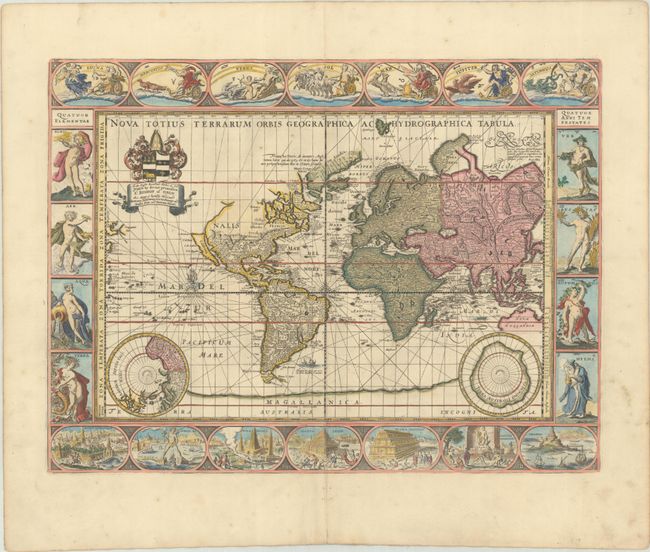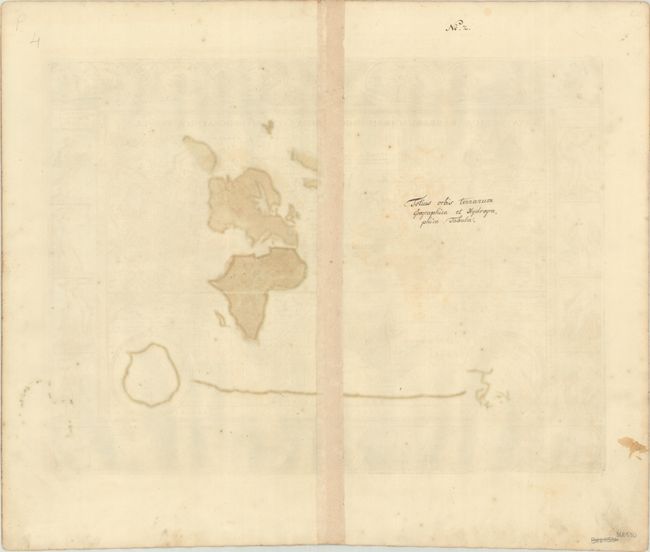Subject: World
Period: 1680 (circa)
Publication: The English Atlas
Color: Hand Color
Size:
20.9 x 15.6 inches
53.1 x 39.6 cm
This beautiful map is one of the most intriguing examples of the internal workings of the map publishing business in the seventeenth century. The copperplate from which the map was printed was originally engraved by Pieter van den Keere (Petrus Kaerius) in 1608. It then passed into the hands of Jan Jansson in 1620, and finally to Jansson’s heirs who formed a partnership with the Englishman, Moses Pitt. The plate was reworked several times and a comparison of the various states provides a compelling view of the changing image of the world during the 17th century. In this final state, the classic carte-a-figures borders remain unchanged, while the map itself was updated with actual discoveries such as Australia, Tierra del Fuego and the straits of Magellan and Le Maire. Other changes reflect prevailing, but erroneous, theories such as an insular California, a peculiar isthmus linking Nova Zemla to northern Asia, and a revived huge Antarctic landmass. The map is very scarce because Pitt’s ambitious atlas project was a commercial failure, resulting in his confinement in debtor’s prison.
This map is a classic example of the mapmaker's art with carte-a-figures borders depicting allegorical representations of the sun, moon, the five known planets, the four elements and the four seasons. Along the bottom are vignettes showing the seven wonders of the world: the Hanging Gardens of Babylon, the Colossus over the harbor at Rhodes, the Pyramids, the Mausoleum of Halicarnassus at Cairo, the Temple of Diana, the Statue of Jupiter and the lighthouse at Alexandria.
References: Shirley #504 (cf. #264).
Condition: A
Contemporary color in the map with later color in the dedication cartouche and the border vignettes. The sheet has wide margins with a couple of insignificant small spots and marginal soiling.



